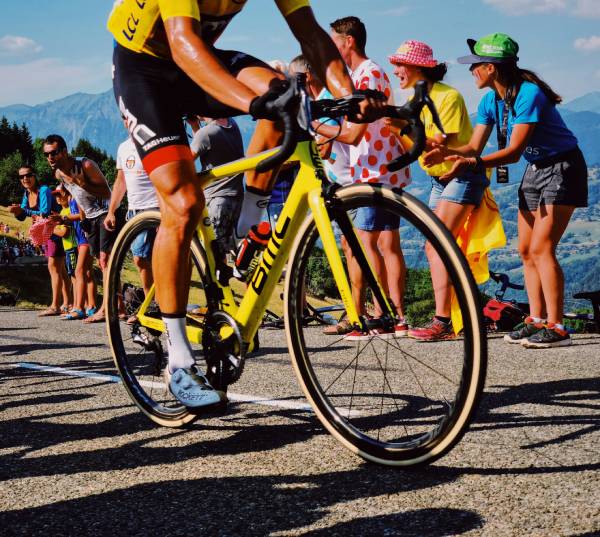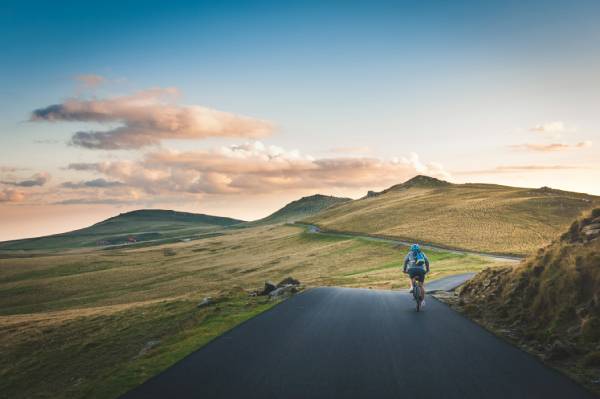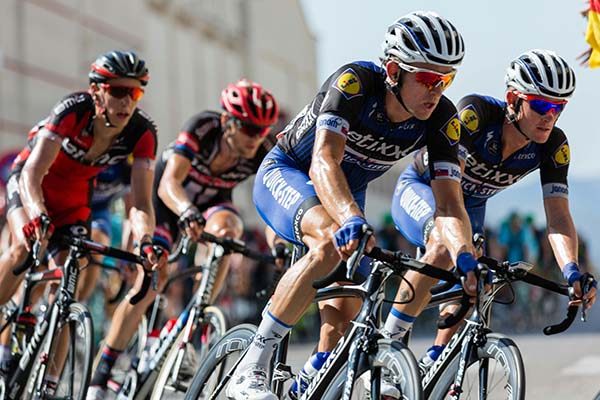Climbing is one of the toughest parts of cycling, and mountain categories are used to show how hard a climb is. Whether you’re a casual rider curious about steep hills or a competitive cyclist chasing King of the Mountain titles, these categories help you understand the effort needed and plan your approach.

What Are Mountain Categories?
Mountain categories sort climbs by how hard they are. This system is common in pro cycling, especially in races like the Tour de France. The ranking depends on things like the length of the climb, how steep it is on average, the total height gained, and sometimes where it appears in a race. In general, the longer, steeper, or higher the climb, the tougher the category.
The categories are ordered as follows:
- Category 4: The easiest climbs.
- Category 3: Slightly tougher but manageable.
- Category 2: Longer and steeper challenges.
- Category 1: Serious climbs for experienced riders.
- Hors Catégorie (HC): Beyond categorization, legendary climbs.
Category 4: The Gateway to Climbing
Category 4 climbs are usually short and not too steep, making them a good starting point for many cyclists. They’re often 1 to 3 kilometers long with gradients between 3% and 6%. Most riders with some endurance and steady pacing can handle them.
Example: A 2-kilometer hill with a steady 5% incline, common in local routes.
Category 3: Steeper and Longer
Category 3 climbs are longer and steeper. They’re often 4 to 5 kilometers with gradients of about 6% to 8%. Here, choosing the right gear and keeping a steady pace are key to making it to the top.
Example: A 4.5-kilometer climb at a 7% gradient, often seen in amateur races or tougher recreational routes.
Category 2: Intermediate Challenges
Category 2 climbs are a real test of strength and stamina. They usually stretch 5 to 10 kilometers with gradients between 6% and 9%. To get through them, riders need steady effort and strong focus to keep a good rhythm all the way up.
Example: A 7-kilometer climb averaging 8%, with occasional steeper pitches.
Category 1: Demanding and Unforgiving
Category 1 climbs are long and demanding, usually over 10 kilometers with average gradients of 7% to 9%. They often have tight switchbacks and steady elevation gains, pushing riders to rely on both strong fitness and mental toughness.
Example: The Col du Tourmalet, 17 kilometers with an average gradient of 7.5%.

Hors Catégorie (HC): Beyond Limits
HC climbs are the toughest of all, going beyond even Category 1. They usually stretch more than 15 kilometers with gradients over 9%, often at high altitude. Their challenge comes not just from the physical effort, but also from their legendary place in cycling history.
Example: Alpe d’Huez, 13.8 kilometers at an 8.1% average gradient, including hairpin turns that test even the strongest riders.
How Are Categories Assigned?
Organizers assess several factors when categorizing a climb:
- Length: Longer climbs are more taxing.
- Gradient: Steeper sections increase difficulty.
- Altitude Gain: Higher elevation impacts oxygen levels, adding to the challenge.
- Race Placement: A climb late in a race feels tougher due to accumulated fatigue.
These elements combined dictate the climb’s category, ensuring consistency across events.
Why Do Categories Matter?
For cyclists, these categories show how much effort a climb will take. A Category 4 hill can be a fun workout, while an HC climb needs weeks of training. In races, these climbs shape strategies, from breakaways to pacing, making the competition more exciting.
Personal Insights: The Thrill of Climbing
I like to include stair running in my interval training, and it feels surprisingly like climbing steep hills on a bike. Your heart rate jumps quickly, and each step, or pedal stroke, feels like a small fight. On a tough climb, I focus on keeping a steady rhythm and breaking it into smaller sections. Climbing isn’t just physical; it takes mental strength to keep going when your legs are burning.
And the reward is worth it: the view from the top and the rush of the descent make all the effort feel amazing.

Tips for Tackling Climbs
- Gear Selection: Shift to lower gears early to maintain a steady cadence.
- Pace Yourself: Avoid going too hard at the start; climbs are all about consistency.
- Body Position: Stay seated for most of the climb to conserve energy but stand for bursts of power on steep sections.
- Train Smart: Incorporate hill repeats and strength training into your routine.
- Nutrition and Hydration: Fuel adequately before and during long climbs to avoid fatigue.
Conclusion
Mountain categories break down the difficulty of a climb into simple levels. From a smaller Category 4 hill to a legendary HC climb, each one offers its own challenge and sense of achievement. Knowing these categories helps you train better and makes the ride more enjoyable, letting you notice the details and effort in every climb.





This really answered my problem, thank you!
You are my aspiration, I have few blogs and rarely run out from brand :). “Never mistake motion for action.” by Ernest Hemingway.
This site is mostly a stroll-by way of for all of the information you wished about this and didn’t know who to ask. Glimpse right here, and also you’ll definitely uncover it.